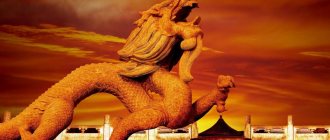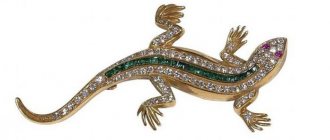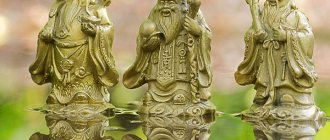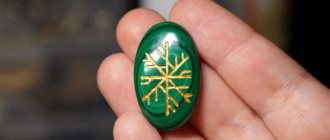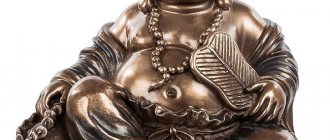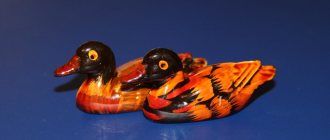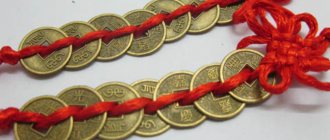The symbol of fish in Christianity plays a very significant role. Firstly, it is closely associated with the name of Jesus Christ. Secondly, it is directly related to the history of this religion. If we remember that in the first centuries of our era in the Roman Empire it was brutally persecuted, it becomes clear why fish is a symbol of Christianity.
This is explained by the fact that at that time it was not possible to speak openly about the new faith and create images relating to it. Therefore, various symbolic signs and drawings appeared. They were a kind of secret writing with the help of which co-religionists identified each other. The meaning of the fish symbol in Christianity will be discussed in detail in the article.
Mysterious acronym
In the ancient Greek language there is a word Ίχθύς, which in Russian is written as “ichthys” and means fish. At the same time, it is a monogram (acronym) of the name of Christ and consists of the initial letters of his full name in Greek. In Russian this is Jesus Christ, the Son of God, the Savior. Instead of this name, the sign of a fish was often depicted, which in short form expresses the confession of Christianity.
Since, due to the persecution of faith in the early stages, images of Christ were an unacceptable subject, the indicated acronym appears in the 2nd century in the Roman catacombs. The symbol of fish in Christianity appeared long before the cross began to be used. After all, a terrible and shameful execution was previously associated with him. It only acquired its current meaning in the 4th century, when the crucifixion was abolished. At a certain period, both symbols were equivalent.
Which fish amulet should you buy?
Depending on the desired result, practitioners recommend paying attention to the abodes of the underwater world presented in the table:
| Type of fish | Magical meaning |
| Whale | Healing diseases |
| The birth of a healthy baby | |
| Healing mental wounds | |
| Dragon fish | Attracting fabulous wealth |
| Finding incredible luck | |
| Gudgeon | Finding Wisdom |
| Making the right decisions | |
| Carp | Finding Courage |
| Development of willpower | |
| Harmonization of relations between spouses | |
| Realizing the truth about yourself | |
| Carp | Attracting wealth |
| Salary increase | |
| Profitable acquisitions | |
| Pike | Stimulating ambitions |
| Victory in competitions | |
| Developing the ability to get things done | |
| Amulet against physical and mental illness | |
| Trout | Gaining secret knowledge |
| Protection from aggressive otherworldly entities and ill-wishers |
Images
Fish were depicted by the first Christians in the catacombs, in churches, on utensils (for example, on lamps), seals, clothes, and in letters. Today it is an element of church decor. On the walls of the catacombs you can see an image of a fish with a basket located on its back. It contains bread and a bottle of red wine. This symbolizes the image of Christ in the Eucharist, that is, in the rite of communion.
In some drawings, the fish is carrying a ship. This is an association with the Christian Church. Three fish, having one common head, symbolically depicted the Holy Trinity, emphasizing its non-fusion and at the same time inseparability. Just as modern Christian believers wear crosses, early representatives of this religion wore fish, which were made of various materials, such as metal, stone, mother-of-pearl, glass.
In his work “On the City of God,” St. Augustine wrote that the symbol of the fish in Christianity is a mysterious sign of Christ, indicating that in the abyss of mortality, as if in the depths of water, he remained alive and sinless.
Miracles involving Jesus and the fish
It could not but be influenced by the fact that the symbol of the Son of God is a fish, and the fact that the Bible describes how Jesus Christ fed many people one time with seven loaves and fish, and the next time with five loaves and two fish.
Saint Paul the Merciful narrates about this event in his writings, speaking about how the Savior fed the people with five loaves of bread and two fish, and calls Christ himself the true bread and fish of the living water.
Having examined some evidence that the image of a fish is inextricably linked with the name of Jesus Christ, which is in the Holy Scriptures and the works of researchers, we can conclude that the fish became a symbol of the Savior during his earthly life.
Smart Clothing: Ingenious Tricks to Save Significant Time
An investigation by Samara local historians confirms: “Zoya’s Standing” is a legend
20 ml of peroxide per liter of water: 5 tips for growing strong pepper seedlings
Gospel symbolism
The New Testament uses this symbol on many occasions. So, in the Gospel of Matthew, Jesus asks if among his interlocutors there is a person who will give his son a stone instead of bread when he asks for bread? Or will she give him a snake when he asks for a fish? According to interpreters of Scripture, here the fish is a symbol of Christ as the true Bread of Life, while the snake is a symbol of the devil.
Matthew also speaks of feeding a large mass of people with seven loaves of bread and a small number of fish. Jesus took the seven loaves and the fish, thanked God, broke the loaves and gave them to his disciples, who gave them to the people. All the people ate and were full. There were more than 4 thousand of them. During another miracle of feeding, there were two fish and five loaves.
All of these episodes testify to the Eucharistic understanding of saturation and are symbolically reflected in the image of a swimming fish with a wicker basket on its back containing bread and wine. This is available, for example, in one of the catacombs of St. Callistus in Rome.
Holy Scripture about the connection between Jesus Christ and fish
The connection between Jesus Christ and fish goes much deeper than the fact that they are acronyms.
It should be borne in mind that Jesus Christ delivered many of his sermons in the vicinity of the Sea of Galilee (the modern name is Lake Kinneret), accordingly, there were many fishermen among those who listened to him. This circumstance led to the fact that among the apostles (disciples of Jesus Christ) there were many fishermen who were close to the fishing theme. He communicated with his students in a language they understood and appealed to simple, in their understanding, terms, trying to turn them from simple fishermen into fishermen of human souls, that is, by popularizing the teaching to convert people to their faith. The Gospel of Matthew indicates that Jesus Christ likened the kingdom of heaven to the sea, and people to all kinds of fish. In the same Gospel (7: 9–11), the description compares Christ to a fish, and the devil to an adder (serpent).
An old stepladder, potted flowers and an armchair: how to turn a balcony into a cozy place
Trampled the mentor: what does Patlakh do, who was kicked out of the show “Dancing”
With a wrap, a slit, and buttons: how to create looks with basic skirts in spring
The writer Tertullian, at the dawn of Christianity, in his work on the Sacrament of Baptism, compares people with small fish, and the Son of God with a fish (ikhthus), and the Kingdom of God with water, where only fish can live.
Holy Apostles
The symbol of fish in Christianity is also associated with the disciples of Jesus Christ. Of these, eight were originally fishermen. Matthew and Mark tell us that the Teacher promised Andrew and Peter that they would become “fishers of men,” that is, they would lead people. The Savior likens the kingdom of heaven to a net that is thrown into the sea and captures fish of all kinds.
In Capernaum there is a statue of Peter, the successor of Jesus, who holds in his hands a staff and a large fish received from the Teacher. Fish is also a symbol of fertility. Each gives birth to countless offspring, which is also used as an allegory of the fact that from the sermons of a small group of apostles, a major religion was gradually formed, whose adherents today number in the billions.
Understanding what the fish symbol means in Christianity, we should also talk about its other interpretations.
Fish
Home > Vitamins for the soul > Symbols >The symbolism of fish incorporates many diverse, sometimes polar opposite, meanings. Since ancient times, fish has been associated with Teachers, world Saviors, ancestors, and wisdom. The Hindu Vishnu, the Egyptian Horus, the Chaldean Oannes, and also Christ are related to the fish symbol. Disciples and followers living in the “water of teaching” are often likened to fish.
There are legends (records of which were preserved in the temples of antiquity) according to which the human race originated from creatures resembling amphibians. Their bodies were covered with scales and they breathed through gills. In a number of myths, fish perform the function of a demiurge, i.e. participate in the creation of the world: for example, fish bring silt from the bottom of the primordial ocean, from which land is created, or serve as the support of the earth.
The symbolism of fish is closely related to the symbolism of water, the water element. In a variety of mythologies, water is the origin, the initial state of all things, the source of life. Therefore, fish that live freely in water, in the primordial ocean, are endowed with demiurgic power, and in a number of myths they also turn out to be the ancestors of people. Water is also associated with the unconscious; knowledge is hidden in the depths of the waters, which is difficult (or impossible) for a person to obtain, but which is accessible to fish. Water cleanses, ritual ablution symbolizes rebirth, a return to the beginning, so a fish living in water represents hope for a new birth. But water is a formidable element, which is reflected in numerous versions of the flood myth, and here a fish can also show its power and help a person escape, as happened in the myth of Manu.
Water is a symbol of the feminine principle, so fish becomes an attribute of many Great Goddesses (Atargatis, Ishtar, Astarte, Aphrodite). In this regard, it can symbolize not only fertility, fertility, abundance, sensual love, but also such negative aspects attributed to goddesses as vanity and greed.
In a number of mythological stories where a giant fish (or whale) swallows and then releases the hero (as, for example, in the myth of Jonah), the fish acts as a kind of equivalent of the lower world, the kingdom of the dead. These stories symbolize the process of initiation, rebirth after symbolic death.
In the Middle East, fish was an attribute of the Syrian goddess of love and fertility, Atargatis (each of her temples had a pond with sacred fish; her son’s name was Ichthys, which means “fish”). This goddess appeared under different names - Ishtar, Derketo, Astarte - and was often depicted as a woman with a fish tail. The myths said that the goddess got a fish tail when she and her son rushed into the waters of the Euphrates to escape from a monster. In Sumerian writing, the sign “fish” expressed the concept of “fertility” and “reproduction.” The Babylonian god Ea could be represented as a fish man. Ea was credited not only with power and wisdom, but also with healing abilities; There are known images of the “fish-shaped” Ea at the bedside of a sick child. Oannes, the Chaldean Savior, was depicted with the head and body of a fish and with human hands and feet. He came out of the sea and taught people writing, science, building cities and temples, agriculture, etc. Fish skin was used as clothing by the priests of Ea and Oannes.
In Egyptian mythology, the goddess of the city of Mendes was Khatme-hit. Her sacred animal is the fish, and her epithet is the First among fishes. She was depicted as a woman with a fish on her head; in the later period she was brought closer to Isis: it was believed that this goddess helped Isis collect parts of the body of Osiris killed by Set.
The Egyptian god Horus was sometimes represented as a fish. Isis, when she nursed little Horus, was also depicted with a fish on her headdress.
In Indian mythology, Vishnu, during his first incarnation as an avatar in the form of a fish, warns the progenitor of mankind, Manu, about the upcoming flood. Killing the demon Hayagriva, Vishnu returns the sacred books of knowledge, the Vedas, stolen by the demon from Brahma. In India, there is a ritual: on the twelfth day of the first month of the Indian year, a fish is placed in a vessel with water and the following appeal is addressed to it: “Just as you, O God, took the form of a fish and saved the Vedas, which were in the underworld, so save me.” !”
In Buddhism, fish symbolizes following the Buddha, liberation from desires and attachments. Buddha, like Jesus Christ, was called a fisher of men.
In Chinese mythology, fish symbolizes abundance, wealth, fertility, and harmony. One of the myths of ancient Chinese mythology speaks of a creature called Lingyu (“Fish Hill”), with the body of a fish; His arms, legs and head are human.
For the Greeks and Romans, fish were sacred in connection with the cult of Aphrodite (Venus), the goddess of love and fertility. Fish as a symbol of the power of water was also an attribute of Poseidon (Neptune). In rituals dedicated to Adonis, fish was used as an offering for the dead.
Among the ancient Semites, the beneficent deity in the form of a fish bore the name Dagon. It was also called Dag, which translated means “fish”, “guardian” or “Messiah”. In Judaism, fish represent the believers of Israel in their true element, in the waters of the Torah. Fish is the food of the Sabbath, a symbol of the heavenly feast.
In early Christianity, fish was adopted as a symbol of Christ by many Church Fathers. The sign of the fish was the first monogram of Christ. Jesus' mysterious Greek name means "fish." It was the fishermen brothers who became the first disciples of Jesus, who told them that they would be “fishers of men.” Believers, disciples of Christ, like himself, were often likened to fish, safe only in the “water of teaching.” The baptismal font quite early began to be likened to a fish tank (piscina). Three intertwined fish or three fish with one head symbolize the Trinity.
The coming of Christ was associated with the onset of the astrological era of Pisces. Jesus “was born as the first fish of the era of Pisces and was doomed to die as the last lamb of the declining era of Aries” (C. G. Jung, AION).
TALE OF THE FLOOD
Manu, the son of Vivasvat, the half-brother of Yama, settled on earth in a secluded monastery near the southern mountains. One morning, when he was washing his hands, as they do to this day, he came across a small fish in the water brought for washing. She told him: “Save my life, and I will save you.” “What will you save me from?” - asked the surprised Manu. The fish said: “The flood will come and destroy all living beings. I will save you from him." “How can I keep you alive?” And she said: “We fish, while we are so small, are threatened with death from everywhere. One fish eats another. You first keep me in a jug, when I grow out of it, dig a pond and keep me there; and when I grow even larger, take me to the sea and release me into the open, for then death will no longer threaten me from anywhere.” Manu did just that. Soon she grew up and became a huge jhasha fish with a horn on her head; and this is the largest of all fish. And Manu released her into the sea. Then she said: “In such and such a year there will be a flood. Make a ship and wait for me. And when the flood comes, board the ship and I will save you.”
And in the year that the fish indicated to him, Manu built a ship. When the flood came, he boarded the ship and the fish swam to him. Obeying her command, Manu took with him the seeds of various plants. Then he tied a rope to the horn of the fish, and it quickly pulled his ship along the raging waves. The earth was no longer visible, the countries of the world disappeared from the eyes; there was only water around them. Manu and the fish were the only living creatures in this watery chaos. Fierce winds rocked the ship from side to side. But the fish swam and swam forward through the watery desert and finally brought Manu’s ship to the highest mountain of the Himalaya. Then she told Manu: “I saved you. Tie the ship to a tree. But be careful, the water may wash you away. Descend gradually, following the decline of the water.” Manu followed the advice of the fish. Since then, this place in the northern mountains has been called “Descent of Manu”.
And the flood washed away all living creatures. Only Manu remained to continue the human race on earth.
Source: E. N. Temkin, V. G. Erman. "Myths of Ancient India"
coral reef
Under the waves of dawn, a flowing current of metal flows between the algae on the warm bottom. The living flora there, in the lagoon silence, mixed its breath with the blooming fauna. And rusty iodine and salt lay a shade of lalla On the anemone and moss that lie in the depths, In the condensed purple flickering fire, The wormy trunks of the star coral. Glistening with scales like liquid enamel, There a heavy fish through blue crystal, Dozing, swims - a sparkling miracle - And suddenly, suddenly raising its fiery fin, Dives. And in the gloomy water at this moment the trembling of gold, fire and emerald runs. J. M. Heredia (translated from French by G. Shengeli)
Other characters
It should be noted that the Church Fathers compared the Christians themselves to fish, saying that they followed Jesus “the water of eternal life.” Thus, Tertullian, an outstanding Christian writer of the 2nd-3rd centuries, believed that the sacrament of water is life-giving, since by washing away the sins of yesterday's blindness with it, people are freed for eternal life.
Writing about baptism, he emphasized that we are the same fish that, following the “fish” Jesus, are born in water and preserve life by remaining in it. Thus, the fish is also a symbol of baptism. The font in which it takes place is called piscina in Latin (in Russian - “piscina”), which literally translates as “fish tank”. And the converts are called pisciculi, that is, “fish.”
Christ also sees fishing as an analogy to conversion. The wearing of the so-called fisherman's ring by the Pope is also connected with this.
As mentioned above, the image of three fish with one head is a symbol of the Holy Trinity. Just like three woven together. For Christians, fish also symbolizes selflessness.
Pisces in Chinese tradition. Riddles of symbols.
Spring!
It's time to draw goldfish! And that's why.
Nowadays, elegant fish with bushy tails and big eyes can be seen in any pet supply store. Aquarists readily breed them as beautiful and at the same time unpretentious fish. Scientists have now established that these beauties were bred from one of the subspecies of crucian carp. But it was not always so…
Europeans saw images of these beautiful fish on luxury goods brought by merchants from the East along the Great Silk Road, and, perhaps, they hardly believed that such strange creatures existed in reality, and not the fruit of the artist’s rich imagination!
However, the Eastern tradition of depicting fish, both large and small, has ancient roots.
Firstly, China is a country with rich water resources. Fish, like rice, occupied an impressive place in the daily diet of ordinary people. Fishing in China was practiced all year round.
At the same time, fish was also valued from an aesthetic point of view.
Beautiful, unusual fish of various shapes were grown in ponds and aquariums.
In China, the image of a fish is considered an auspicious symbol, promising happiness, prosperity, wealth and harmony, as well as liberation from all restrictions.
The latter meaning is believed to be related to the Buddhist tradition of freeing living beings such as birds and turtles, which were purchased deliberately during religious holidays in order to be released into the wild.
In Chinese, the word for fish, yu, is similar to the word for abundance. On the one hand, there is an abundance of fish in the rivers, and on the other, the fish itself gives abundant offspring.
There is a tradition when young men present a fishing net to the bride's family due to its good meaning.
Therefore, the image of two fish is a symbol of a happy marriage, especially in the most romantic senses...
It is believed that the image of two fish is especially good to place in the marital bedroom.
Carp occupies a special place among fish.
This attitude towards carp has developed due to the fact that the life of a carp is spent in a constant struggle for existence. In search of food or a place to spawn, these fish have to travel vast distances, fighting the current. The longevity of carp is also valued. For this reason, carp is called the king of fish.
Carp is also called dragon fish.
It was believed that every carp that could climb up the Yellow River through all the rapids during the third moon would turn into a dragon.
Thus, the carp is perceived as an exclusively masculine symbol: a symbol of perseverance, power, ambition, military valor, as well as literary talent.
And now some photos for inspiration!
And now some paintings depicting fish in the Chinese tradition.
© Kalina Tatyana, 03/16/2016.



